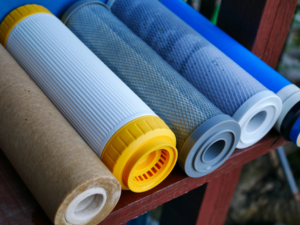
Looking for a little more information on this device? Thinking about implementing reverse osmosis in your Lombard home? If so, then you’re in the right place. This article has all the information you’ll need to know.
What Contaminants Do Reverse Osmosis Systems Remove?
Reverse osmosis systems can’t remove every single contaminant contained within a water supply. No system is capable of that. However, they can remove the vast majority, leaving water as pure and as drinkable as technologically possible.
Contaminants removed by reverse osmosis systems vary from chemicals, to minerals, to bacteria. These include everything from calcium, to magnesium, to iron, to arsenic, to lead, to mercury, to radon, to E. coli, and more.
When a reverse osmosis system has purified a batch of water, that water will contain only trace amounts of any existing contaminants. The amount will be so small that it’s virtually undetectable by taste and by smell.
How Do Reverse Osmosis Systems Work?
Reverse osmosis systems work by filtering water at a few different levels. Each of these levels removes different contaminants, making the water more and more pure as it passes through the system. We’ll review the specifics of each level below.
Pre-filter Level
At the pre-filter level, large contaminants like sand, dirt, and silt are removed from the water. This can be done with as many as 3 filters, and it’s vital in preparing the water for the next stages.
Membrane Level
The vast majority of the work done by the reverse osmosis system is done in the membrane level. This level involves the use of a semipermeable membrane. This membrane carries out the reverse osmosis process, filtering out microscopic particles like iron, calcium, magnesium, radon, bacteria, and the like.
Post-filter Level
Reverse osmosis filtration ends at the post-filter level. In this level, a series of filters are used to flush out the remaining contaminants. Though this level won’t catch all of the contaminants that remain, it will catch the large majority, leaving the water almost totally void of all minerals, chemicals, and bacteria.
Characteristics of Reverse Osmosis Systems
Reverse osmosis systems are fairly unique amongst water conditioning systems. We’ll discuss their characteristics below.
On the Smaller Side
Reverse osmosis systems are fairly small devices, often capable of fitting underneath sinks and other similar entities. This is in contrast to systems like water softeners, which can sometimes take up entire closets.
Struggles with Large Loads
Reverse osmosis systems aren’t the most efficient systems in the world. In fact, they waste more water than they purify. As such, they struggle with purifying large loads of water. For this reason, they’re used almost exclusively for drinking water purposes in homes. They typically won’t produce enough water to accommodate washing and cleaning.
Affordable to Operate
Reverse osmosis systems use almost no energy whatsoever. Driven by water pressure, they can be operated at essentially no cost. Just keep up with maintenance, and your system should be ready to go at all times.
Looking to Install a Reverse Osmosis System in Lombard?
Is a reverse osmosis system right for your home? Looking to establish reverse osmosis in Lombard? If so, DuPage Water Conditioning has you covered.
We’ve installed reverse osmosis systems in countless homes throughout the Lombard area. With our help, you can enjoy the benefits of highly purified water in no time.
Contact us today to request a free quote!
